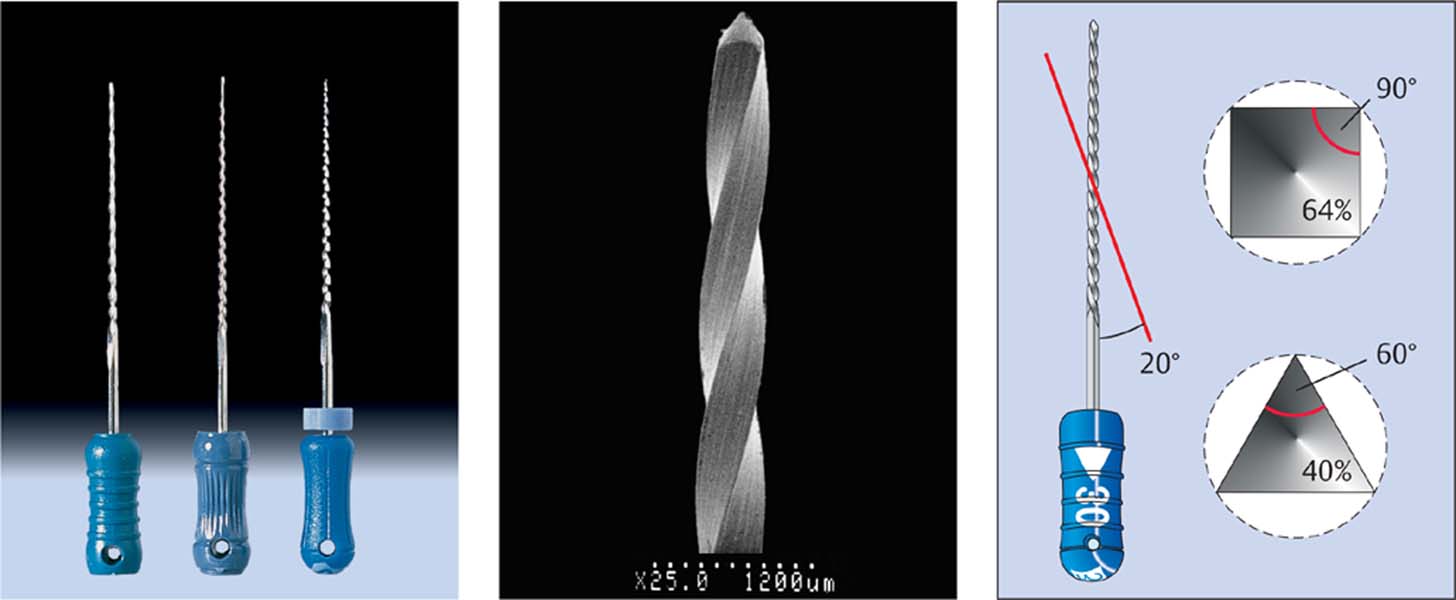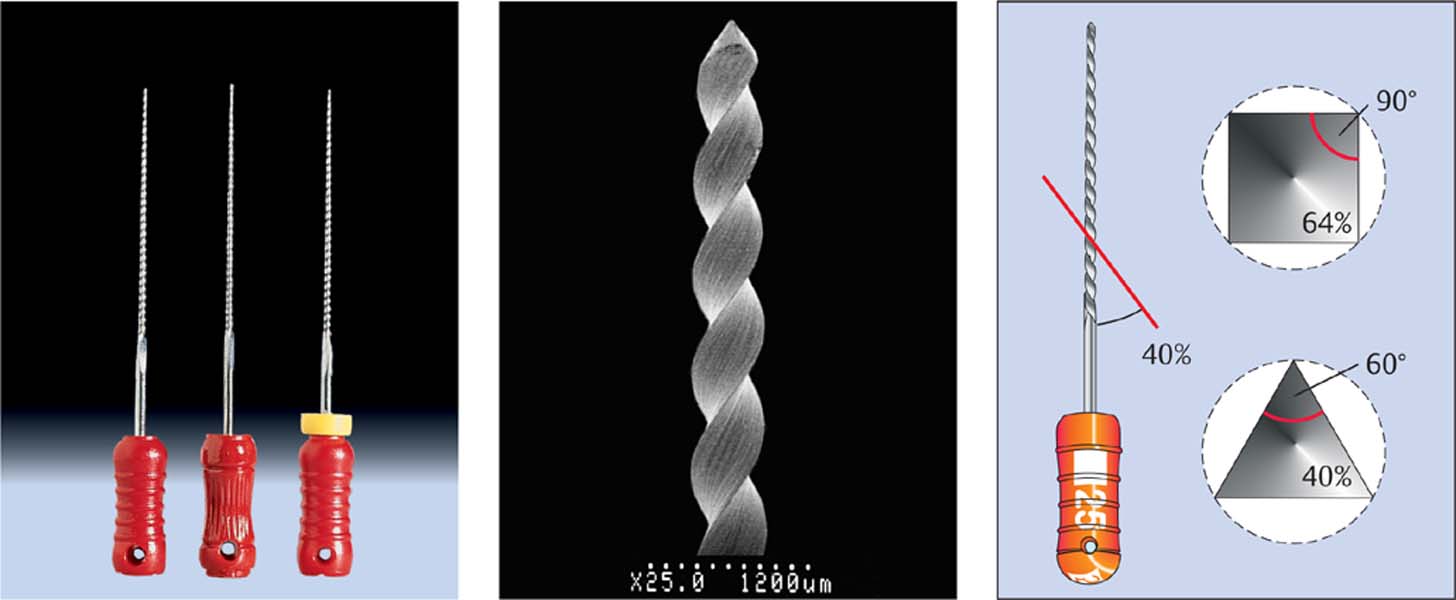9 Conventional Instruments and Advances in Design
All endodontic hand instruments are based on three basic forms: K drills (= K reamer), K files, and Hedström (H) files. Initially fabricated from carbon steel, since the 1960s all endodontic hand instruments have been made from stainless steel, and are therefore less likely to corrode with frequent sterilization. Smaller K-type files are fabricated by twisting a file blank with a square (four-edged) cross section, whereas file sizes >30 are produced by twisting a triangular blank (see Figs. 9.1, 9.2).
The square cross section is more stable and stiff, with less chip space between the threads (36%) so a smaller amount of dentin is cut away from the canal walls. The triangular cross section is more flexible, with wider chip spaces between the threads (60%), but is also more susceptible to fracture.
9.1 K files
Left: The K reamer or K drill (from left: VDW, Kerr, Maillefer) is one of the most basic types of endodontic instruments.
Middle: Scanning electron photomicrograph (SEM; ×25 magnification) showing the number and geometry of the flutes in a reamer (0.5–1 twists/mm).
Right: While the triangle is the symbol for reamers, the square profile is used for smaller sizes (chip space of 36%) and the triangular profile for larger sizes (chip space 60%).
With cutting angles of <45°, use of a rotary filing technique is ideal. This is true for K reamers (with an angle of at least ~20°) and K files (~40°).
Hedström files are milled from round steel stock. They exhibit sharp edges with an angle of ~60° and are therefore highly efficient for root canal instrumentation. They are significantly more efficient than K files, which are often recommended for pure filing, although K files are more effective with a rotatory motion (Tepel et al., 1995).
9.2 K/>
Stay updated, free dental videos. Join our Telegram channel

VIDEdental - Online dental courses




